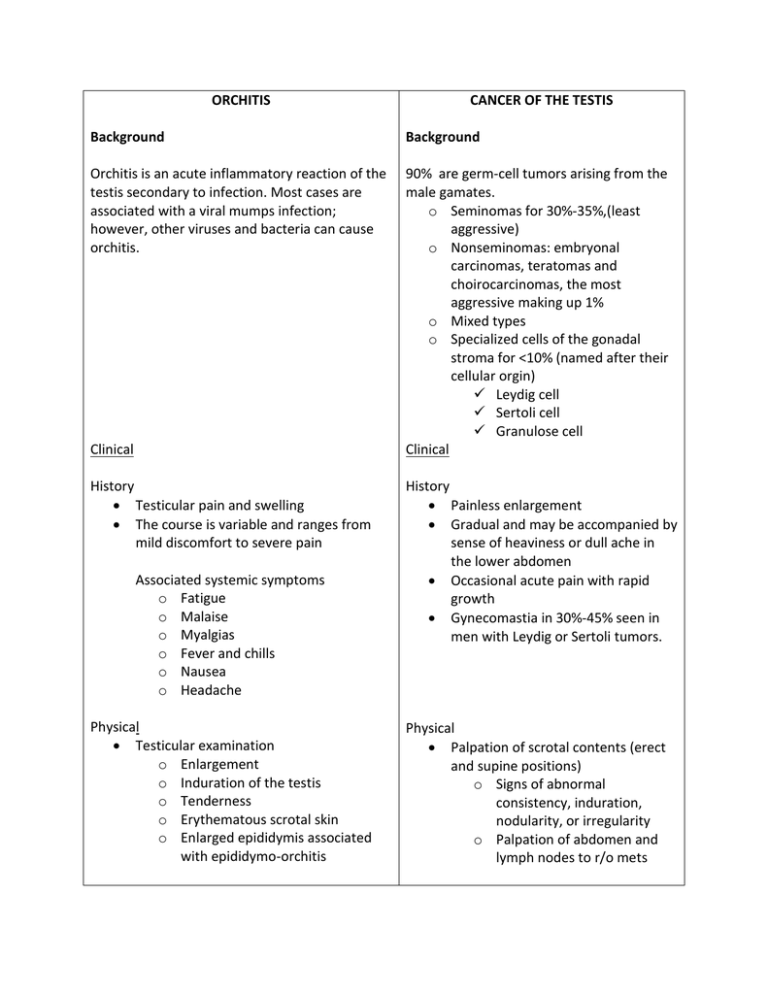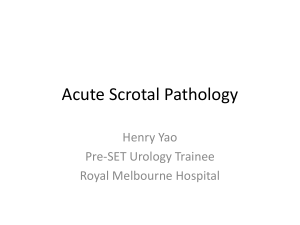ORCHITIS CANCER OF THE TESTIS Background
advertisement

ORCHITIS CANCER OF THE TESTIS Background Background Orchitis is an acute inflammatory reaction of the testis secondary to infection. Most cases are associated with a viral mumps infection; however, other viruses and bacteria can cause orchitis. 90% are germ-cell tumors arising from the male gamates. o Seminomas for 30%-35%,(least aggressive) o Nonseminomas: embryonal carcinomas, teratomas and choirocarcinomas, the most aggressive making up 1% o Mixed types o Specialized cells of the gonadal stroma for <10% (named after their cellular orgin) Leydig cell Sertoli cell Granulose cell Clinical Clinical History Testicular pain and swelling The course is variable and ranges from mild discomfort to severe pain Associated systemic symptoms o Fatigue o Malaise o Myalgias o Fever and chills o Nausea o Headache Physical Testicular examination o Enlargement o Induration of the testis o Tenderness o Erythematous scrotal skin o Enlarged epididymis associated with epididymo-orchitis History Painless enlargement Gradual and may be accompanied by sense of heaviness or dull ache in the lower abdomen Occasional acute pain with rapid growth Gynecomastia in 30%-45% seen in men with Leydig or Sertoli tumors. Physical Palpation of scrotal contents (erect and supine positions) o Signs of abnormal consistency, induration, nodularity, or irregularity o Palpation of abdomen and lymph nodes to r/o mets Rectal Examination o Soft boggy prostrate(prostatitis) often associated with epididymoorchitis o Stool for occult blood Other o Parotitis o Fever Scrotal ultrasonography Tumor markers Causes Most commonly, mumps causes isolated orchitis the onset of scrotal pain and edema is acute mumps orchitits presents unilaterally in 70% of the cases In 30% of cases, contralateral testicular involvement follows by 1-9 days. Other rare viral etiologies include coxsackievirus, mononucleosis, varicella and echovirus Causes/ increased risk with Cryptorchidism Mumps orchitis Familial Injury Reference Mycyk, M.B. (2007). Orchitis. Retrieved February Reference McCance, K. L., & Huether, S. E. (2006). 8, 2009 From: Pathophysiology: the biologic basis for http://emedicine.medscape.com/article/777456overview disease in adults and children. St. Louis, MO.: Mosby Inc..










